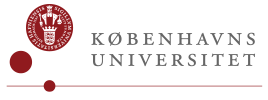Many Greenlanders Face 10 Times Higher Risk of Diabetes – Exercise May Be Their Only Solution
A significant portion of the Greenlandic Inuit population carries a genetic variant that increases their risk of type 2 diabetes tenfold. Now, researchers from the University of Copenhagen have discovered that the key to addressing this issue lies solely in their muscles. Unfortunately, existing medications are unlikely to help – and in fact may even do more harm than good. On the other hand, the study reveals that physical exercise could have a positive effect.

While diabetes was virtually unknown in Greenland in the 1960s, its current prevalence there is now nearly twice as high as in Denmark. One group of Greenlanders faces a significantly higher risk of developing the chronic disease. Specifically, this at risk group is made up of four percent of Greenland’s Inuit population, as revealed by a population study ten years ago.
"These four percent carry a specific mutation in the TBC1D4 gene, which gives them a tenfold increased risk of type 2 diabetes. The gene variant makes them highly glucose intolerant – meaning that when they consume sugar, they struggle to get it out of their bloodstream," explains Professor Jørgen Wojtaszewski of the University of Copenhagen’s Department of Nutrition, Exercise and Sports.
Professor Wojtaszewski and a research team led by the University of Copenhagen and the Steno Diabetes Center Greenland have now investigated how exactly the gene variant affects the body. Their studies were conducted on a group of Greenlandic carriers of the variant, with the results now published in Nature Metabolism.
"We can see that people with this genentic variant have insulin-resistant musculature. This means that their muscle tissue responds poorly to insulin, which is critical, as muscles account for the majority of the body's sugar uptake. Consequently, this condition dramatically increases their risk of developing type 2 diabetes," says Wojtaszewski, adding:
"What’s particularly unique is that insulin resistance is typically present not just in muscles, but in the liver, fat tissue, and other organs and cells as well. But for carriers of this gene variant, resistance is found only in the muscles, which is unprecedented."
This also means that carriers of the variant do not become ‘ill’, as long as their pancreas can effectively release insulin, and their other organs maintain normal insulin sensitivity.
"Unlike other pre-diabetic conditions, these individuals do not exhibit elevated fasting blood sugar or insulin levels, nor indicators of heightened long-term blood sugar. And this makes it all the more challenging for doctors to detect," explains Wojtaszewski.
An Hour of Daily Exercise Helps
At the molecular level, the gene variant prevents carriers from expressing the TBC1D4 protein in their muscle tissue. As part of the study, researchers tested whether physical activity could increase insulin sensitivity in the muscles of this segment of the Greenlandic population. Previous studies in animal models had indicated that the presence of TBC1D4 is crucial for this to happen. The hypothesis was that exercise might not work for this specific group.
"It turns out that even a single training session involving one hour of moderate physical activity increases insulin sensitivity in the muscles of gene variant carriers – although the effect is not as pronounced as in non-carriers. This strongly suggests that muscle use through physical activity can reduce the risk of type 2 diabetes in gene variant carriers," says Jørgen Wojtaszewski, adding:
"People with this gene variant have constituted a relatively large part of the population for hundreds of years, and they will continue to for generations to come. Now we can advise them on how to prevent diabetes – namely through physical activity."
Unfortunately, current diabetes medications are not suitable for this group, as the professor explains:
"The challenge with treating carriers using conventional diabetes medications is that these drugs do not increase insulin sensitivity in muscle, but primarily serve to reduce sugar production in the liver, which subsequently lower overall blood sugar levels. However, since carriers of the variant do not have elevated blood sugar levels when not eating, such treatment carries a significant risk of causing dangerously low blood sugar."
Paving the Way for New Medications
Previous population studies in Greenland have provided insight into the genetic composition of less than 10% of the population. As such, a great deal of work lies ahead before genetic information can be made available for the entire population. Such information will be able to help personalize advice for individual gene variant carriers.
"However, the insight we’ve gained into human biology by combining data from these population studies with our follow-up physiological research is truly remarkable. This new understanding offers hope that, in the future, we may see a new type of medication for 'ordinary' type 2 diabetes," says Jørgen Wojtaszewski.
Because, even though the TBC1D4 protein is normally expressed in people with type 2 diabetes who don’t carry the gene variant, the regulation of its activity is impaired.
"We know that a particular enzyme, one activated during physical activity, positively influences TBC1D4 activity. The pharmaceutical industry is already working to identify molecules that can activate this enzyme to regulate TBC1D4 activity, and in doing so, enhance insulin sensitivity. If such a drug reaches the market, it could benefit most other forms of type 2 diabetes," concludes Jørgen Wojtaszewski.
ABOUT THE STUDY:
- A major population study in 1962 demonstrated that only 0.07% of Greenlanders had diabetes. Around the turn of the millennium, another survey was conducted on the prevalence of diabetes, and revealed that nearly 10% of the adult population over 35 years of age had diabetes.
- The TBC1D4 gene plays a crucial role in how insulin regulates sugar uptake in muscles. If a person has two identical copies of the specific gene variant, as 4% of the Inuit population does, insulin sensitivity in muscle tissue is massively impaired.
- The gene variant increases the risk of developing type 2 diabetes approximately tenfold. As a result, 80% of gene variant carriers will develop diabetes before the age of 60.
- The scientific article detailing the study was published in the journal Nature Metabolism.
- The research was partly supported by the Novo Nordisk Foundation and Independent Research Fund Denmark and conducted in collaboration between researchers from the University of Copenhagen (Associate Professor Rasmus Kjøbsted, Professors Torben Hansen and Jørgen Wojtaszewski) and the Steno Diabetes Center Greenland (Professor Marit Jørgensen).
[BOX] FROM HISTORICAL ADVANTAGE TO MODERN DISADVANTAGE
Why four percent of Greenlandic Inuit carry this particular gene variant remains unknown, but the researchers have a theory:
"The mutation is found exclusively in the Inuit population, both in Greenland and northern Canada. The mutation's high prevalence suggests that it may have been advantageous for survival at some point in history," says Jørgen Wojtaszewski.
It is still too early to say exactly how the mutation may have been beneficial to the Inuit. It may have increased their chances of survival under harsh climatic conditions, potentially linked to metabolic advantages for thriving on a traditional hunter-gatherer diet rich in protein and fat, but low in carbohydrates.
"What might have been an advantage in the past is now causing problems, as Greenlanders have adopted a more Western lifestyle with a higher intake of carbohydrates and less physical activity. They are less able to handle carbohydrates compared to people without the mutation," explains Jørgen Wojtaszewski.
Keywords
Contacts
Jørgen Wojtaszewski
Professor, Section Head
Department of Nutrition, Exercise, and Sports
jw@nexs.ku.dk
35 32 16 25 / 28 75 16 25
Maria Hornbek
Journalist
Faculty of Science
maho@science.ku.dk
22 95 42 83
Links
ABOUT THE FACULTY OF SCIENCE
The Faculty of Science at the University of Copenhagen – or SCIENCE – is Denmark's largest science research and education institution.
The Faculty's most important task is to contribute to solving the major challenges facing the rapidly changing world with increased pressure on, among other things, natural resources and significant climate change, both nationally and globally.
Subscribe to releases from Københavns Universitet
Subscribe to all the latest releases from Københavns Universitet by registering your e-mail address below. You can unsubscribe at any time.
Latest releases from Københavns Universitet
Fra Stevns til Månen: Dansk-ledet rummission skal kortlægge Månens overflade17.12.2025 06:00:00 CET | Pressemeddelelse
Københavns Universitet skal stå i spidsen for den første danske månemission. Missionen skal kortlægge Månens overflade i hidtil uset detaljegrad, som skal gøre det sikkert at lande og etablere baser på Månen i fremtiden.
Your Christmas decorations may be hiding a tiny bit of badger and toad16.12.2025 09:27:05 CET | Press release
Researchers at the University of Copenhagen have discovered that moss acts as a natural trap for environmental DNA. This discovery opens the door to using moss as a simple, gentle and inexpensive method of monitoring biodiversity – from birds and mammals to fungi, insects and microbes.
Din juledekoration gemmer måske på en lillebitte smule grævling og skrubtudse16.12.2025 09:17:58 CET | Pressemeddelelse
Forskere fra Københavns Universitet har opdaget, at mos fungerer som en DNA-fælde i naturen. Og den opdagelse åbner for mos som en enkel, billig og skånsom metode til at holde øje med biodiversiteten – fra fugle og pattedyr til svampe, insekter og mikrober.
Forskere genopliver gamle ærtesorter i enorm frøsamling: ”Et uudnyttet guldkammer til fremtiden”15.12.2025 10:29:09 CET | Pressemeddelelse
Med en ny AI-metode har forskere fra Københavns Universitet genopdaget 51 gamle ærtesorter, som ikke længere bruges i landbruget, men som kan vise sig lovende til produktion af plantebaserede fødevarer. Metoden er en genvej til at finde nye ressourcer i de grønne skatkamre, som genbankers enorme frøsamlinger udgør.
Fermentering gør havets grøntsager mere spiselige5.12.2025 06:18:59 CET | Pressemeddelelse
Tang har længe været hyldet som en bæredygtig superingrediens – men dens “fiskede” smag er en barriere for mange vestlige forbrugere. Nu viser et nyt studie fra Københavns Universitet, at fermentering med mælkesyrebakterier kan være nøglen til at få tangen til at glide ned.
In our pressroom you can read all our latest releases, find our press contacts, images, documents and other relevant information about us.
Visit our pressroom